All products featured are independently chosen by us. However, SoundGuys may receive a commission on orders placed through its retail links. See our ethics statement.
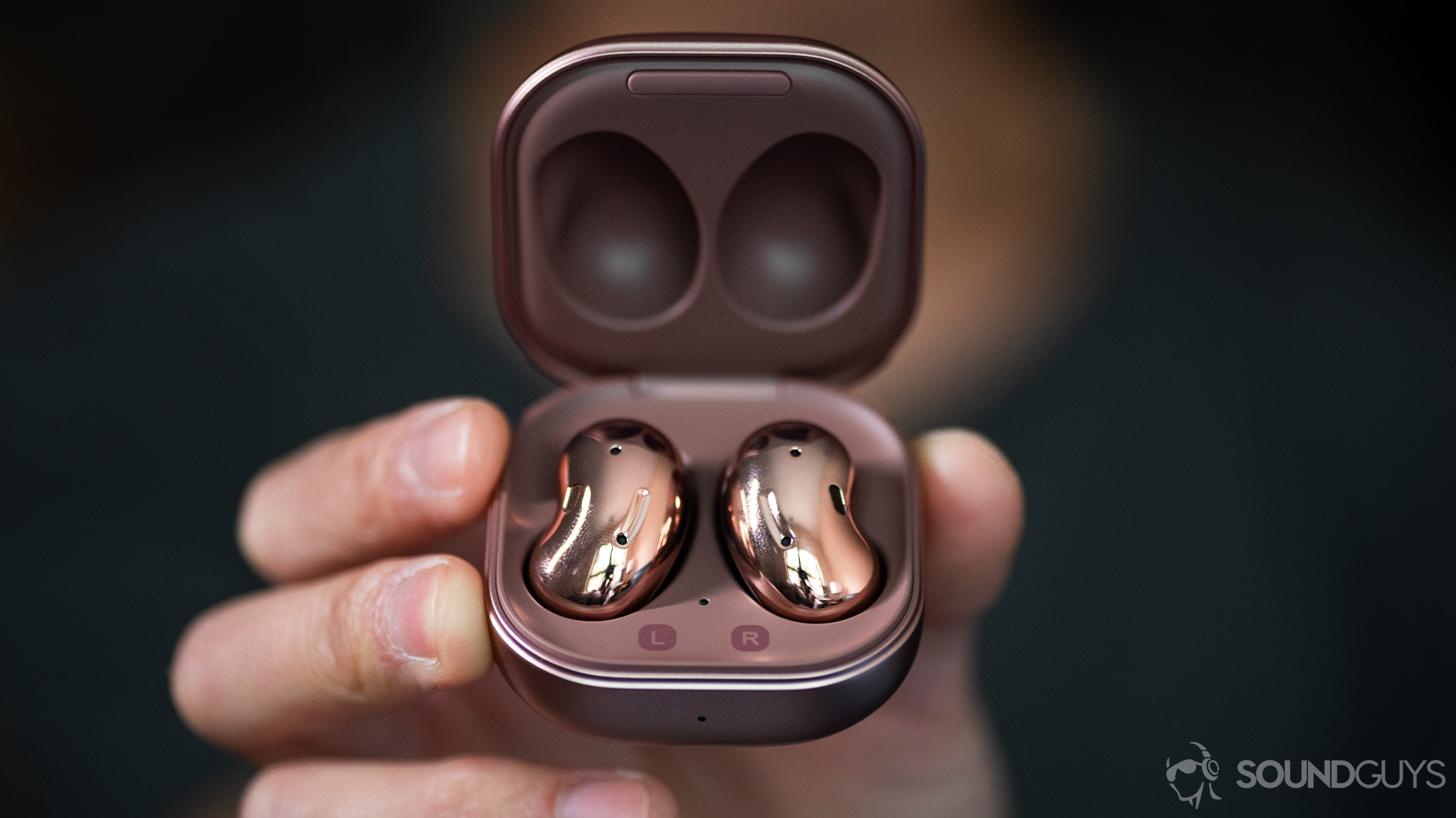
Samsung Galaxy Buds Live review
July 22, 2024
Samsung Galaxy Buds Live
Someone get the can opener, because the beans are in. The Samsung Galaxy Buds Live attracts plenty of attention for its kidney bean-shaped earbuds and unsealed fit. These open-fit active noise canceling (ANC) earbuds stand out from the crowd, but perhaps Samsung bit off more than it could chew with the Galaxy Buds Live.
We spent a week with the Galaxy Buds Live to learn everything you need to know before buying. It’s time to grab your spoons and dig in.
Editor’s note: this Samsung Galaxy Buds Live review was updated on July 22, 2024, to ensure the timeliness of the information within.
Samsung Galaxy smartphone owners will benefit the most from the Galaxy Buds Live, thanks to Samsung Scalable Codec support and Wireless PowerShare. Plus, anyone considering the AirPods (3rd generation) should get this instead since it fits more securely.
What are the Samsung Galaxy Buds Live like to use?
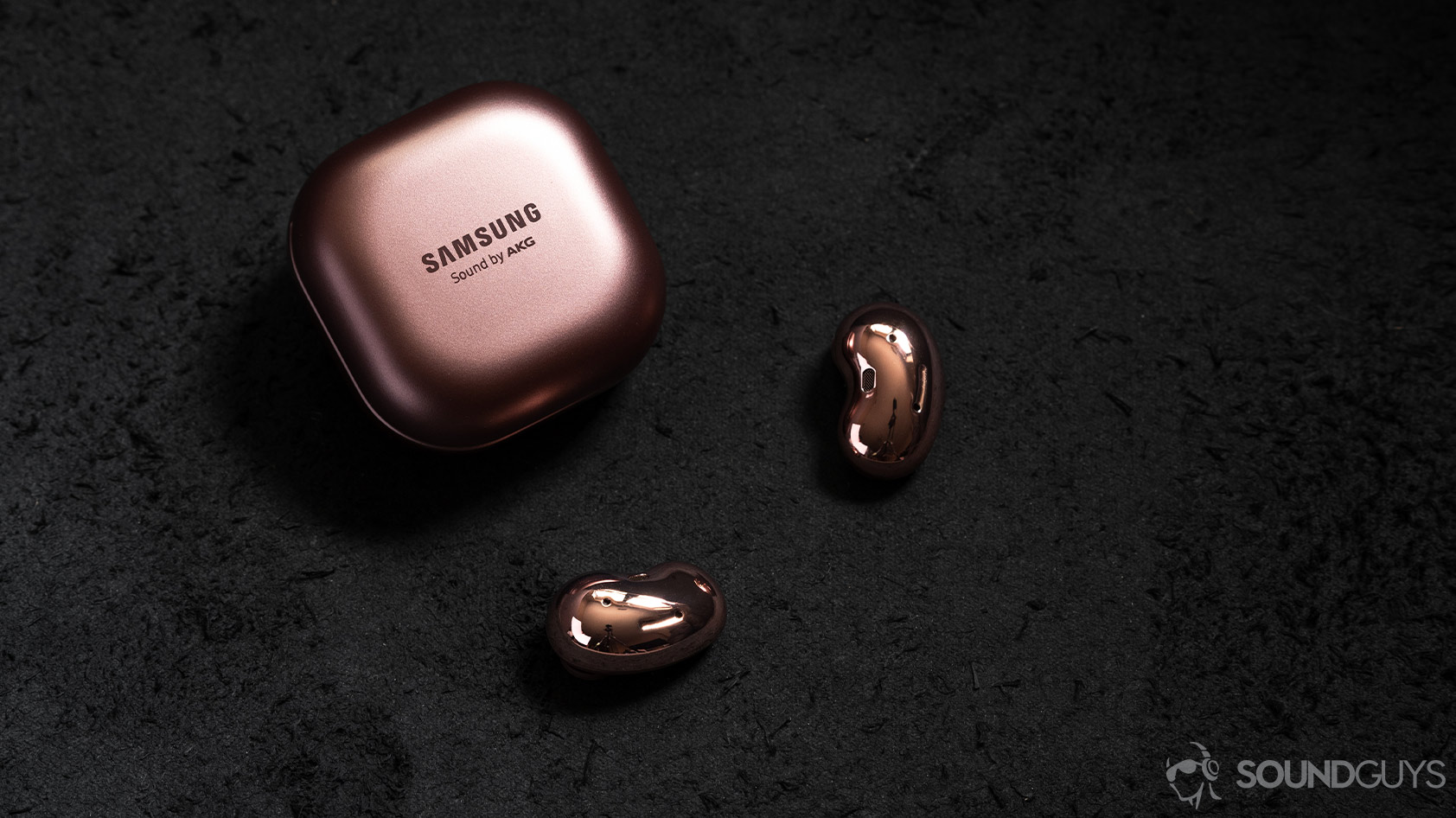
The Samsung Galaxy Buds Live looks luxurious but remains simple to use. Your first interaction with the Samsung Galaxy Buds Live isn’t with the earbuds; instead, the experience starts with the squared-off, plastic charging case. Don’t let the material choice turn you off to the buds, though: it has a nice sheen and semi-matte finish that makes it enjoyable to use, especially compared to the glossy veneer of the Galaxy Buds Plus. No buttons exist on the or in the case, just two LEDs to indicate the case and earbuds’ respective battery levels.
Each half of the jewelry box-inspired charging case has a lip that makes it very easy to open the case with one or both hands. Samsung added an extra reflective finish to the Mystic Bronze color variant, but the Mystic Black, Mystic White, and Mystic Red options are treated with the same glossy finish. When I open the case, it feels like I’m unboxing a pair of earrings or a ring box.
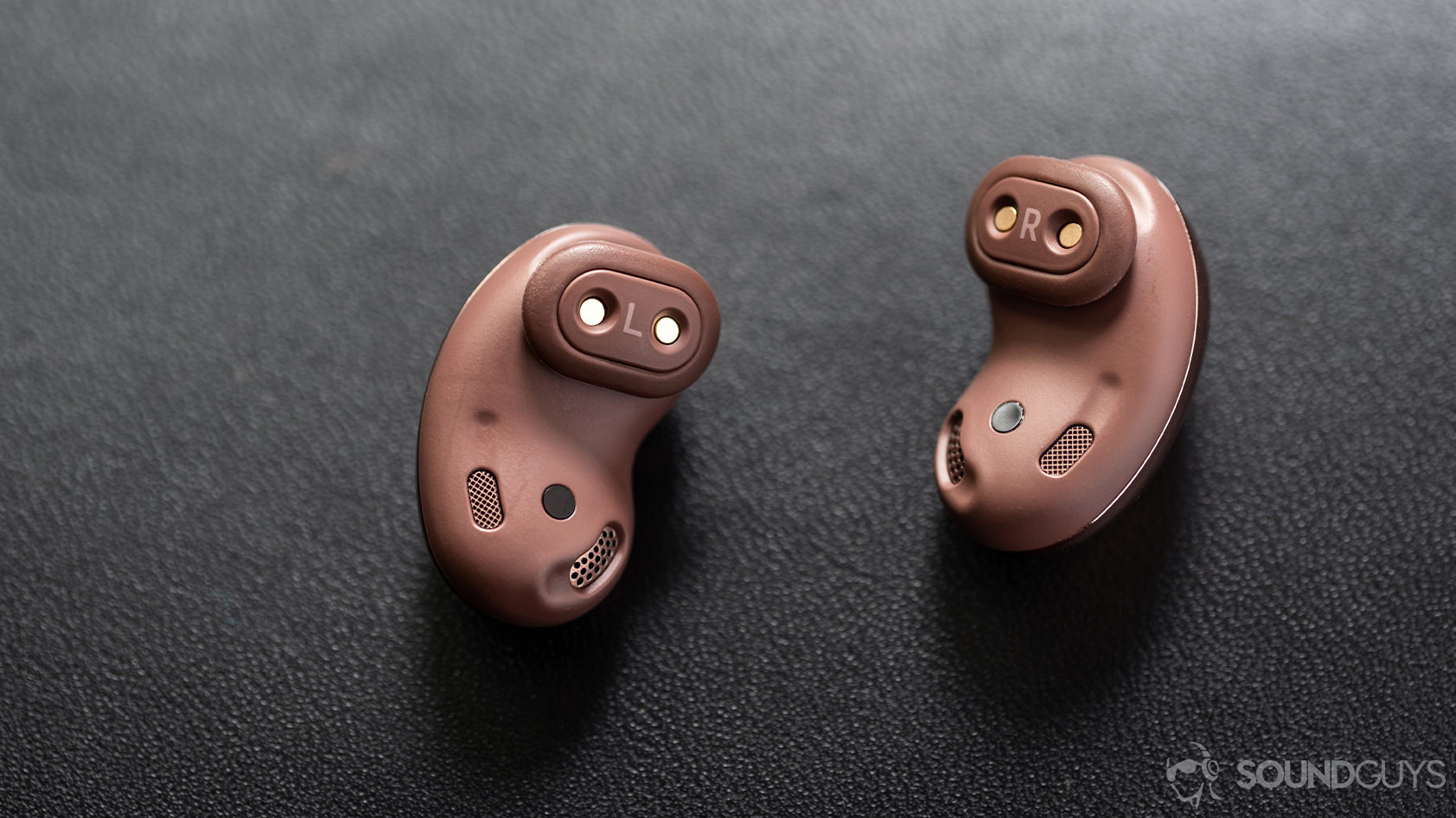
Magnets keep the earbuds in place, which allows me to be imprecise about dropping them into their cutouts. Sometimes, though, I need to push the earbuds up so the contacts touch the pin connectors for charging.
Now, onto the earbuds. They’re shaped like beans and don’t look like they will stay in place, but they always do. The Galaxy Buds Live buds stay in my ears during various exercises like rock climbing and running. No matter how much I jump or shake my head, these buds stay in place.
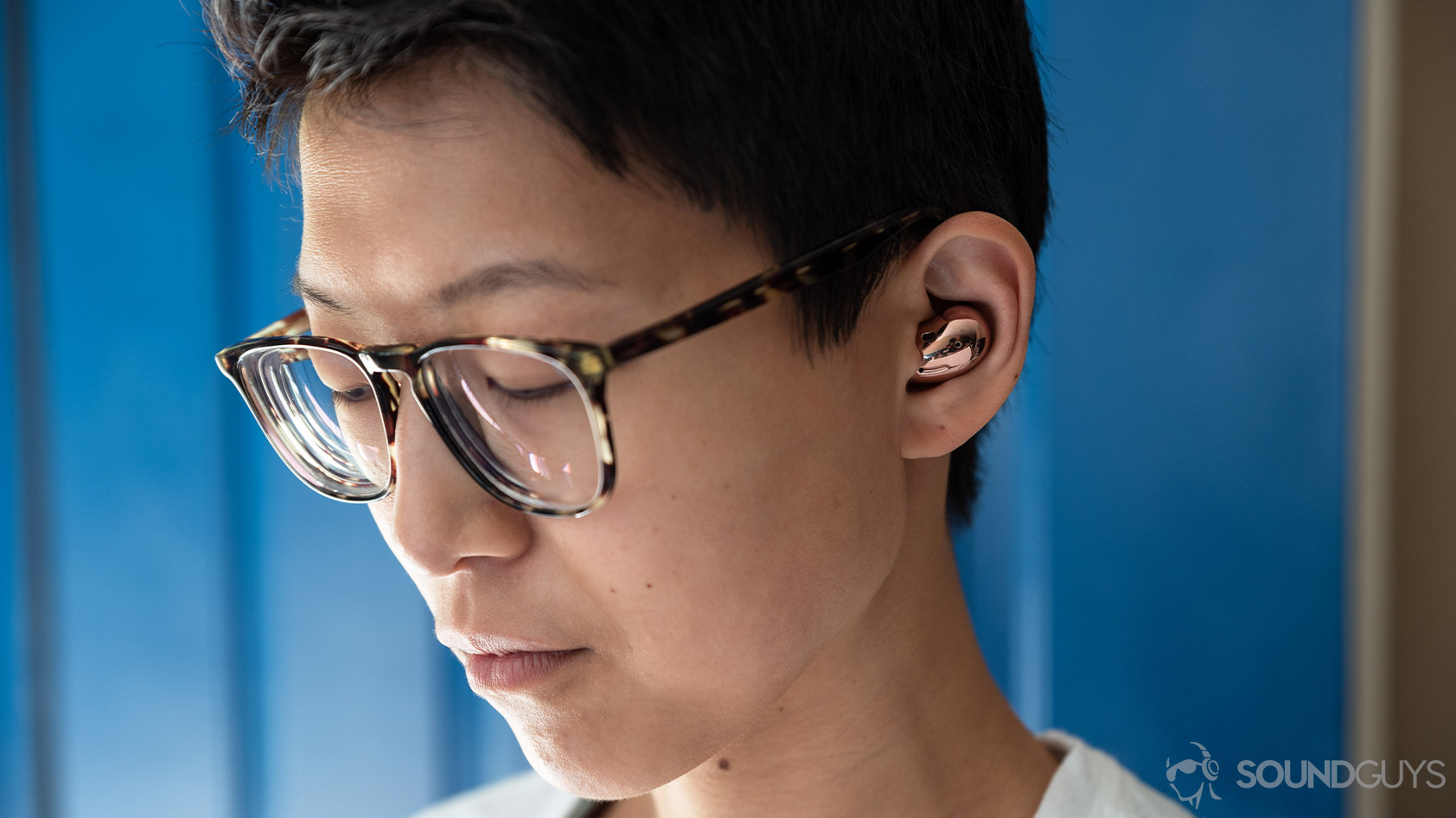
They aren’t always comfortable, though. The one-size-fits-all approach is nice in theory, but it leaves many of us unsatisfied. After 90 minutes, I have to remove the earbuds because my outer ears become sore, whether I use the small or large-sized ear stays.
To properly fit the Galaxy Buds Live, follow these steps:
- Identify the left and right earbuds.
- Locate the bottom, inward-facing part of one earbud.
- The bottom should face down as you slide it into your ear canal.
- Rotate the top of the earbud so it rests firmly against your upper ear (concha).
- Make sure the external mics are still visible (you may need a mirror)
- Repeat steps 1-5 with the other earbud.
If the buds are falling out after you’ve tried these steps, you may need to try a different-sized ear stay. There’s a learning curve to correctly wearing the earbuds, but soon it becomes automatic. If you’re unsure of how to install the Samsung Galaxy Buds Live, Samsung provides directions on how to wear them in the Galaxy Wearable application.
How do you control the Galaxy Buds Live?
Touch panels make it easy to operate controls without reaching for your phone, and someone out there could be excited to know that direct voice access to Bixby is here.
The Samsung Galaxy Buds Live chipped away at my skepticism and proved to be a fine pair of buds for the right consumer.
Non-Samsung users can control media playback, make volume adjustments, and toggle noise canceling from the headset. The inward-facing IR sensors also detect when the earbuds are in and out of your ears, allowing auto-pause functionality. To resume playback, you must tap either earbud. Automatic ear detection isn’t the Galaxy Buds’ strong suit and pales compared to the OnePlus Buds’ response time. If you want to remap any of the controls or delve further into the earphones’ feature set, get the companion app.
Should you get the Samsung Galaxy Wearable app?
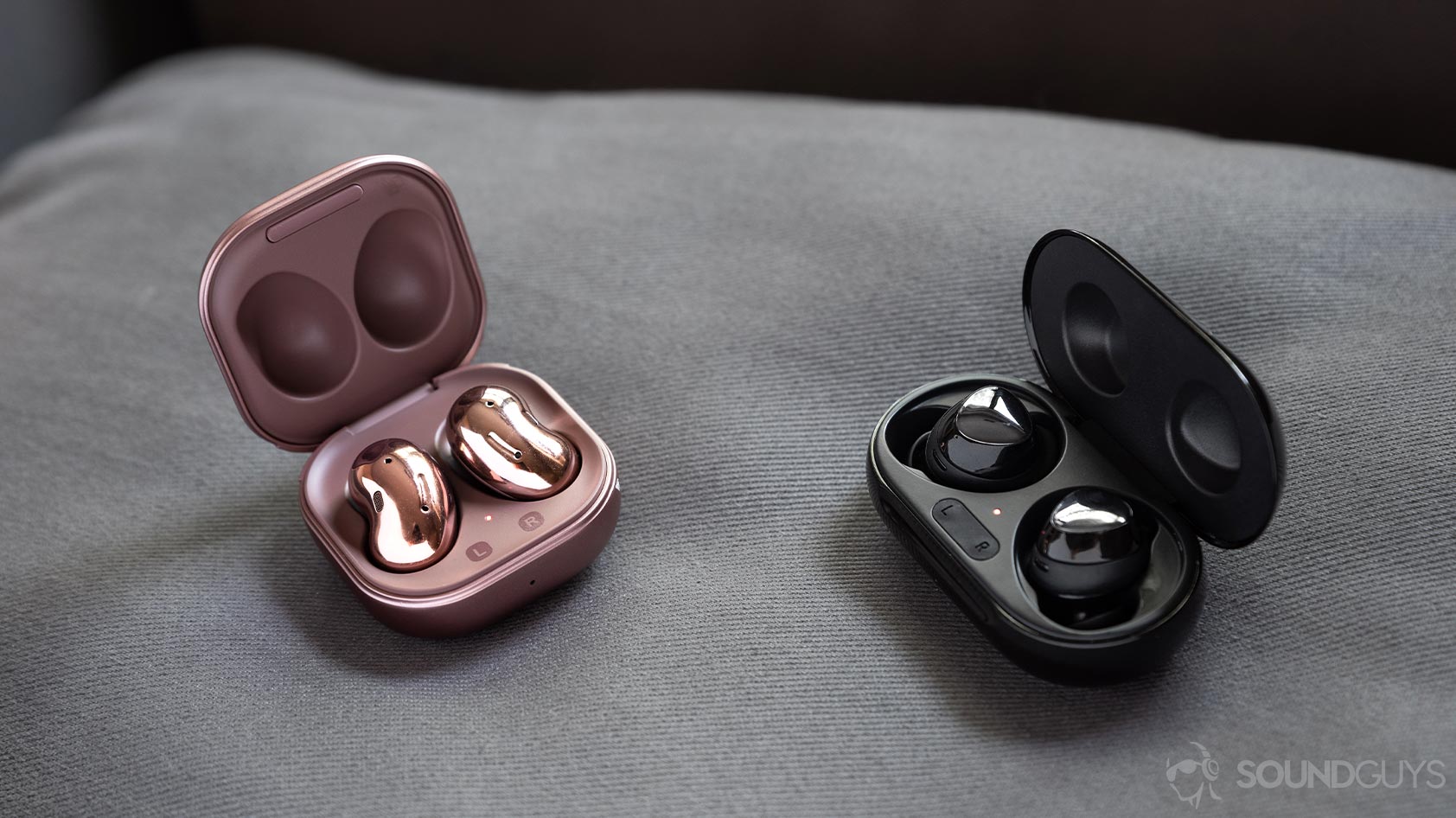
The Samsung Galaxy Wearable app (Android) or Galaxy Buds app (iOS) is worth downloading if only for firmware update access. You may also select from six EQ presets (Normal, Bass boost, Soft, Dynamic, Clear, and Treble boost), remap the touch controls, enable incoming notifications to be read aloud, toggle hands-free Bixby access on/off, and enter the Galaxy Labs tab where Samsung stores experimental features.
iOS and Android users can access their respective apps, but some features are limited to Android (e.g., Spotify Tap and notification readouts). Only Samsung Galaxy devices support hands-free, direct Bixby access and Samsung 360 Audio with the Samsung Galaxy Buds Live. 360 Audio is Samsung’s take on spatial audio, a virtualized 360-degree surround sound experience. With this, movies sound more immersive, but the Galaxy Buds Live doesn’t get head tracking like the Galaxy Buds 2 Pro.
Galaxy Labs is where you’ll find Gaming mode, which minimizes audio-visual lag, perfect for gaming and video streaming. Labs also has an ambient sound option to mitigate that clogged-ear feeling. Of course, you can also update the earbuds’ software and take a guided tour of your earbuds via the illustrated user manual.
What Bluetooth codecs does the Samsung Galaxy Buds Live support?
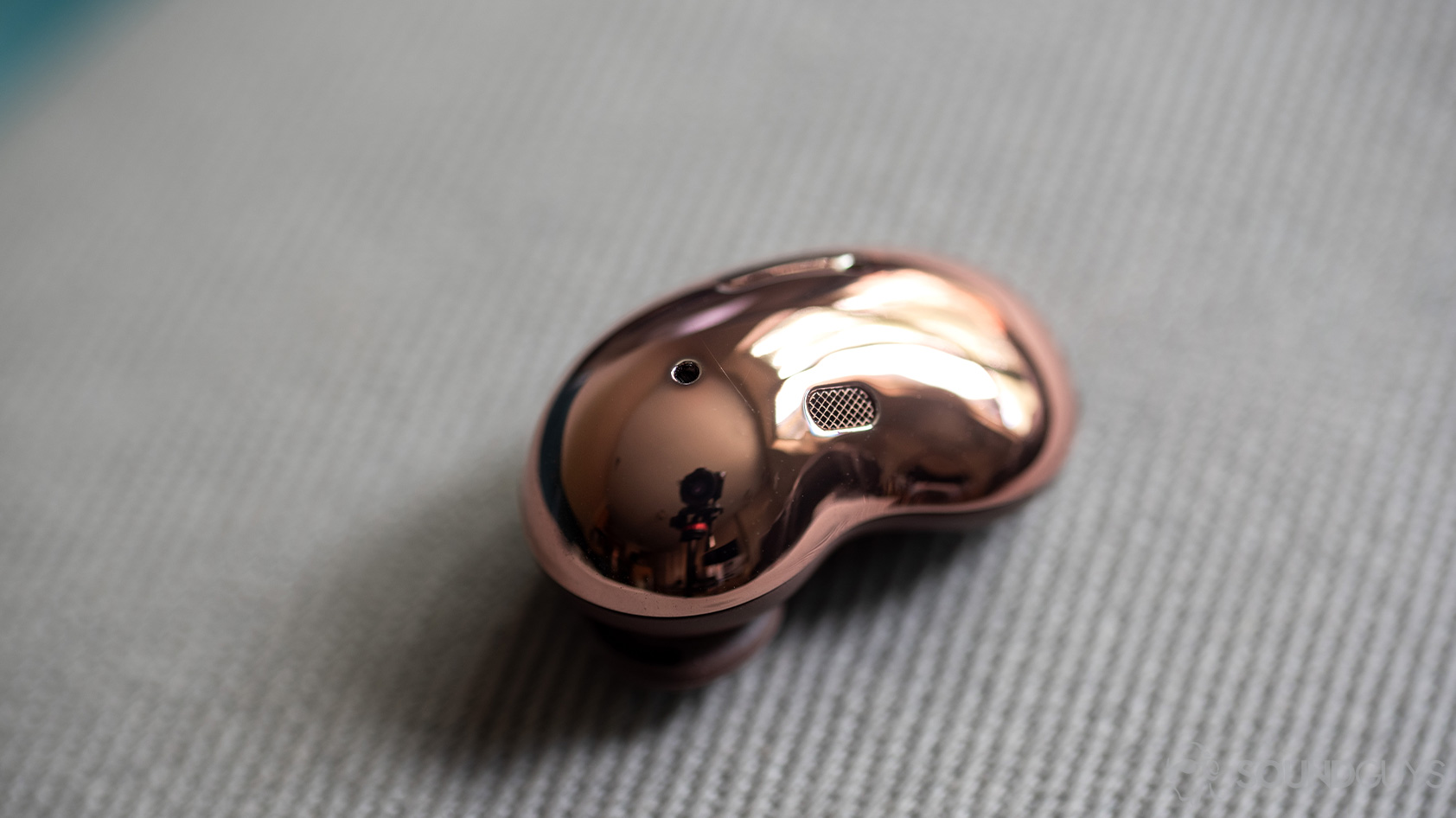
The Samsung Galaxy Buds Live uses Bluetooth 5.0, streamlining the pairing process with Android devices running Android 5.0 and later, much like the Google Pixel Buds A-Series. All you have to do to pair the earbuds is enable Bluetooth on your Android smartphone and open the charging case. A pop-up card will appear and read, “My Galaxy Buds Live” at the top. Once you tap “Connect,” a connection will then be established between your smartphone and the Samsung Galaxy Buds Live.
Streamlined pairing processes like this make wireless headsets accessible. Even the least tech-savvy among us can use the Samsung Galaxy Buds Live right out of the box with little effort.
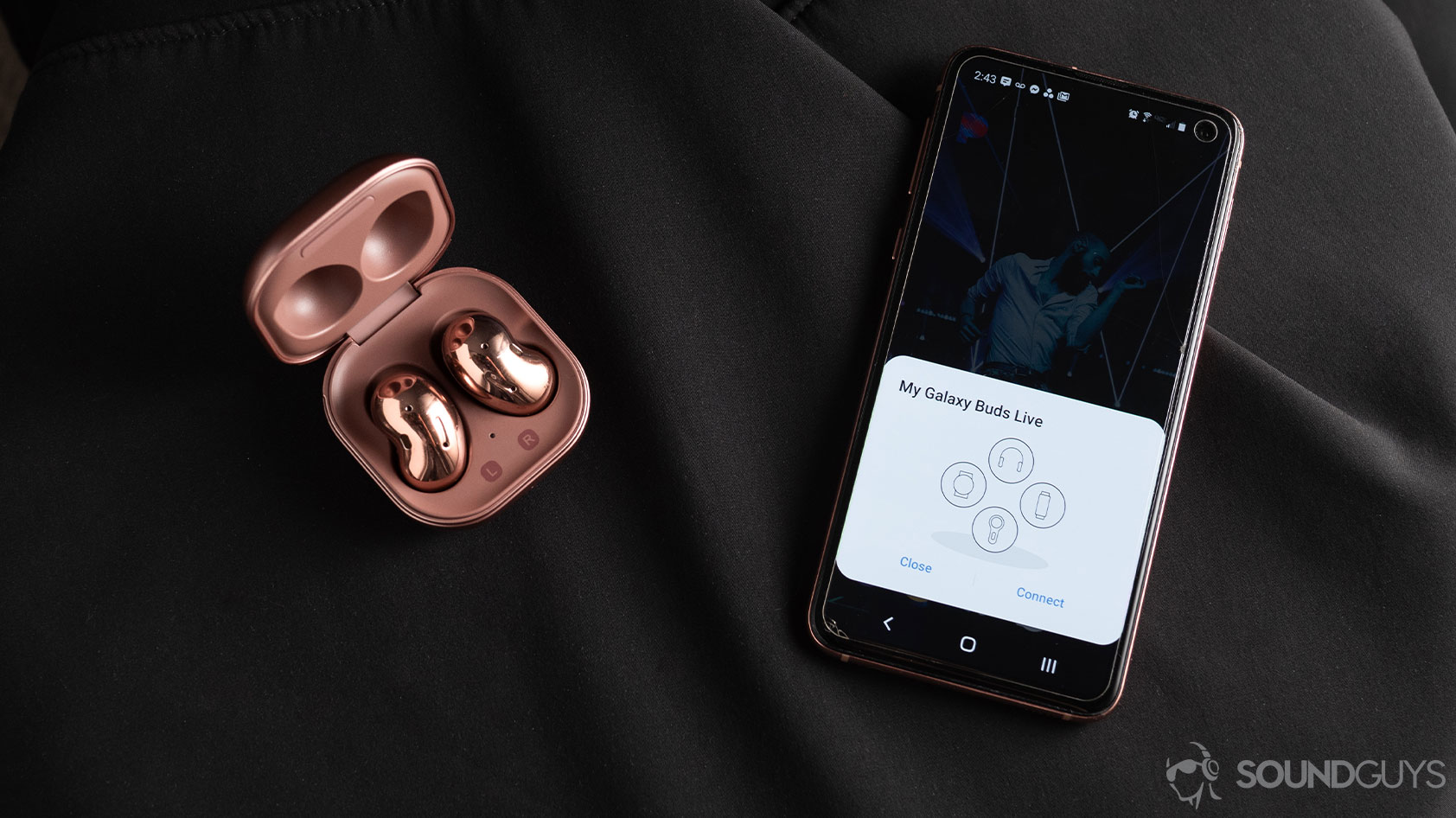
The Galaxy Buds Live supports SBC and AAC, which is good news for iPhone users interested in these earbuds. The earbuds also use Samsung’s Scalable Codec. Rather than hopping between static streaming rates, the Scalable Codec operates on a sliding scale from 96 to 512kbps. It balances sound quality and connection stability, so listeners using a Samsung device experience few, if any, connection hiccups.
Unfortunately, the Samsung Galaxy Buds lineup still doesn’t support Bluetooth multipoint. However, you can automatically switch between Samsung source devices as long as they’re all connected under the same Samsung account.
Pairing these Bluetooth earbuds with an iPhone is more involved but easy nonetheless.
- Enable Bluetooth on your iPhone.
- Open the charging case.
- Select “Galaxy Buds Live” from the list of available devices in your iPhone’s Bluetooth menu.
- A connection will then be established between your iPhone and the earbuds.
To enter pairing mode directly from the onboard touch controls, tap and hold both touch panels simultaneously until a beep resonates. Then, follow the steps for your respective device.
Absent aptX support isn’t as big of a deal as you might expect
Although the absence of aptX support is disappointing, its presence wouldn’t have made much of a practical difference: high-quality Bluetooth codecs require all of the basics to be optimized first. In other words, you need to achieve a proper fit with a seal between the earbuds and your ear canal. Music is subjected to plenty of auditory masking: loud external sounds make it hard to perceive relatively quiet sounds, and even quiet ones will impact sound quality to varying degrees.
Any detail gained by using a high-quality Bluetooth codec to stream your music (compared to SBC) would be rendered null because environmental noise masks music detail. In this particular instance, AAC, SBC, and the Samsung Scalable Codec are fine for sound quality purposes; no high-quality codec will magically make the audio from the Galaxy Buds Live make you forget an audiophile setup.
How good is the battery life of the Samsung Galaxy Buds Live?
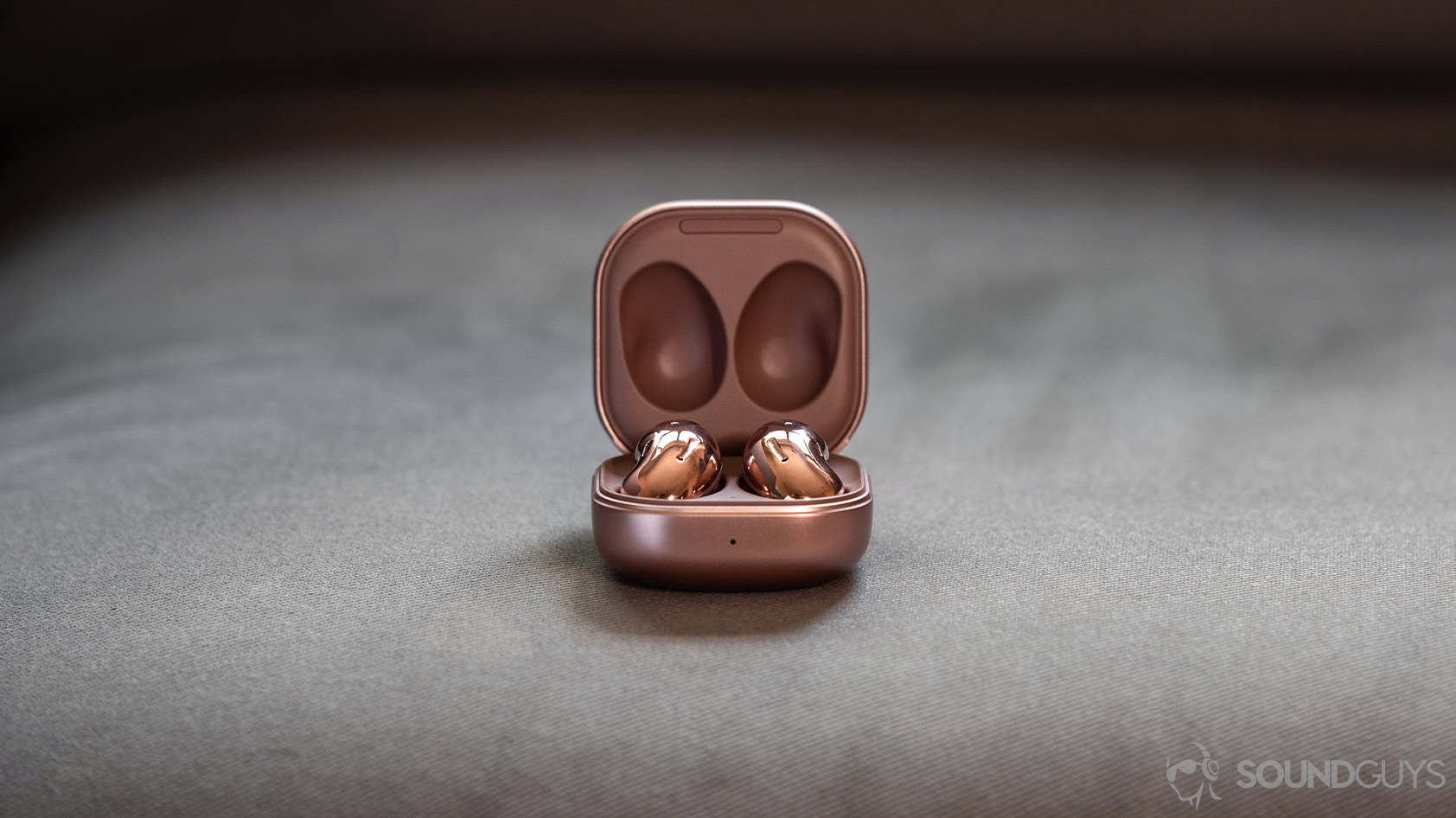
The Samsung Galaxy Buds Live lasted 5 hours and 15 minutes on a single charge with noise canceling enabled. Our testing methodology subjects every audio product to the same rigors: a constant output of real music peaking at 75dB(SPL) until battery depletion. If you listen at quieter volumes, you’ll get closer to the specified 6-hour playtime from the earphones. Quick charging the earbuds takes just five minutes for one hour of listening.
Listeners who plan to listen with ANC exclusively enabled will enjoy an additional two-and-a-half charge cycles from the branded case. Disabling ANC entirely affords approximately 8 hours of standalone playtime and 2.63 extra charge cycles. Samsung’s case retains wireless charging capabilities and is Qi wireless compliant. You may also top up the case directly from your Samsung Galaxy smartphone via Wireless PowerShare.
The constant deplete-and-recharge nature of wireless batteries exacerbates this decrease in capacity. Most of us place the earbuds back in the case when we’re not using them. While this makes for a convenient organizational tool, it also means the earbuds are always charging to 100%, and rarely hitting 0%. Right now, most totally wireless earbuds have an expiration date. With that in mind, be sure to adjust your budget for earphones accordingly.
Apple is attempting to soften this issue with software: its iOS update now instructs the AirPods line of earbuds to communicate with the case, preventing them from charging beyond 80% capacity until you plan to use them. This slows down the degradation process by learning your usage habits. If you consistently listen to your earbuds on the train to and from work during the week, the earbuds will only top up in preparation for that event. That’s just one example of the technology that will become familiar with each user’s habits over time.
The Samsung Galaxy Buds Live noise canceling works
Because testing an unsealed ear necessarily introduces a type of selection bias, we’ve opted to hold off on publishing measurements on the ANC performance of the Samsung Galaxy Buds Live. Instead we will post scores, but no charts. We absolutely do not want this kind of thing passed around until we can verify a range of reasonably representative outcomes in normal use. The problem is twofold: because the earphones don’t seal the ear, a number of variables we can’t control (like the size and shape of your ear, distance of the Buds to your ear canal, etc.) will dramatically change the performance for you—much more so than earphones that seal the ear canal. Because whatever chart we posted would not reflect your experience, its utility is very limited here.
While the noise canceling doesn’t meet the hubristic claim of muting 0-600Hz frequencies, the technology quiets low frequencies to the point where they sound about half as loud as they would without ANC enabled. The ability to dispel low frequencies without a proper seal is no small achievement: having an unsealed ear canal makes it nearly impossible to combat outside noise in real-time. Let’s not mince words — the Samsung Galaxy Buds Live’s noise canceling performance is nowhere near the best, but it is impressive considering the conditions it operates under. The software has to work much harder to reduce background noise without the help of good passive isolation.
Samsung braved new ground with its earbuds, and took a risk in a time when everyone is following Apple's lead.
The noise canceling performance is impressive, given the conditions. Still, there’s no getting around the fact that passive isolation is the cornerstone of all the best canceling headsets, and that requires a proper seal to form between the earbuds and your ear canal. If a seal doesn’t form, well, that introduces outside noise to your music. No matter how effective a noise cancelation system is, it can’t completely make up for a tenuous fit.
I prefer traditional noise canceling earbuds, but I understand the Galaxy Buds Live’s appeal most when walking around. I enjoy hearing my surroundings without software passthrough, which usually sounds unnatural and grating. Even then, I don’t notice a big difference between enabling and disabling noise-canceling though.
You can learn about the ins and outs of feedforward and feedback noise canceling, but all you have to know from this Samsung Galaxy Buds Live review is that noise canceling works but will not mute your surroundings.
How does the Samsung Galaxy Buds Live sound?
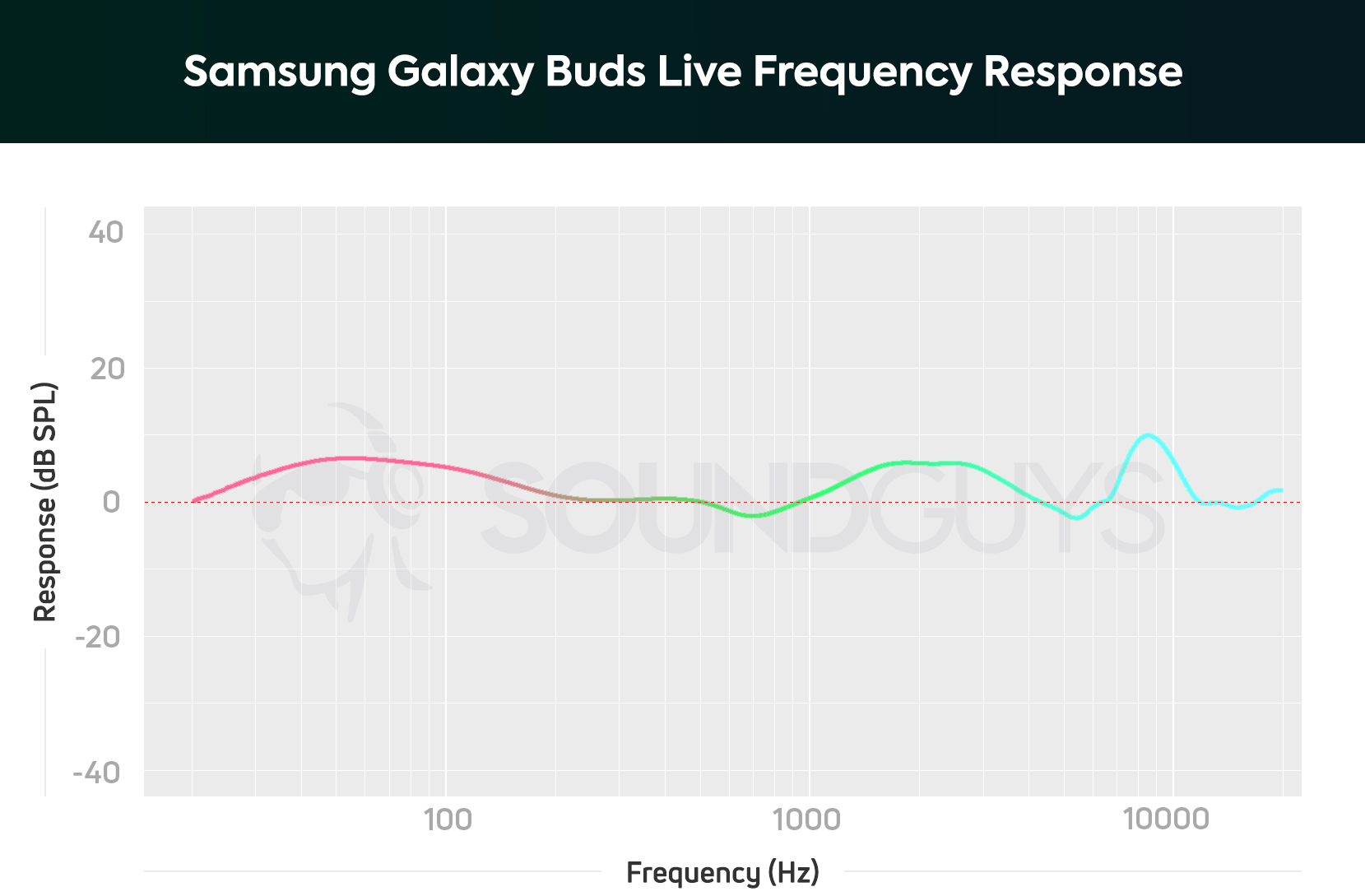
Sound quality is okay from the Galaxy Buds Live, but again, your mileage will vary based on fit, outside noise, and other consequences of an unsealed ear canal. The AKG-tuned 12mm dynamic drivers have a consumer-friendly sound that handles popular genres of music like hip-hop, pop, and rock, but we suggest playing around with the app if you find that the sound isn’t what you want out of the box. This is not an audiophile product, given its likely use, but not everyone needs a set of high-performance audio products when they’re out and about.
We’ll caution you again to take any charts posted of the measurements with a truckload of salt because the nature of an unsealed ear canal means that the fit can’t be controlled for. However, the most repeatable result is shown above. On top of that, you’re unlikely to hear your music quite as the chart depicts because of how auditory masking works: the loud external noises of your environment make it hard to process the sounds from your music. This happens because our brains have limited bandwidth for auditory processing, prioritizing threatening sounds (e.g., a screeching car or a roommate washing dishes) over quieter ones (e.g., music playback). Our brains do this to survive, but it can make it difficult to enjoy music to the fullest when out and about.
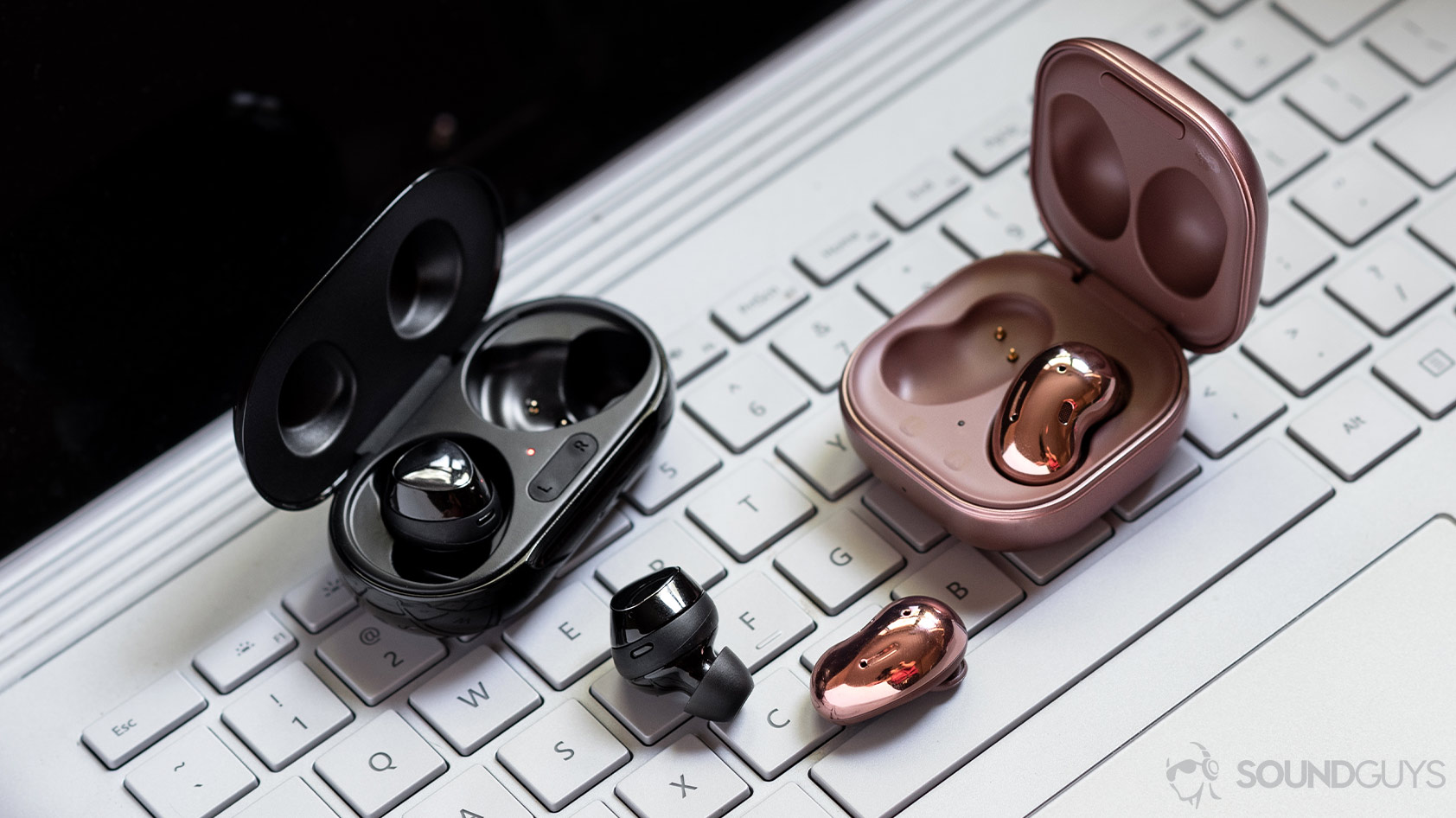
The sound is good for general consumers and aligns with what we’re accustomed to hearing: amplified bass and high notes. Bass emphasis isn’t as egregious as I expected it to be, though voices are hard to hear during instrumentally busy parts of any song, like choruses.
When you’re listening to your music out on the street, or even as your roommate loads up the washing machine, clarity will be lost; your brain will be more focused on picking up those external, loud sounds than on parsing apart tonal resonances.
These bean-shaped buds stay in my ears while exercising—which doesn't happen when I wear the Apple AirPods.
That said, the familiar sound will attract listeners of all sorts. Bass emphasis like this actually helps your ability to drown out noise near you, given that at your ear canal. They’re about one and a half times louder than low-midrange notes, which masks some musical detail. How AKG tuned these 12mm dynamic drivers won’t give you a surgically accurate representation of what your music sounds like. Still, it’s a pretty typical sound target for consumer audio products. If you usually buy your audio products from big box stores, you’ll be at home with this kind of sound that plays kindly with pop, hip-hop, and electronic music.
Lows, mids, and highs
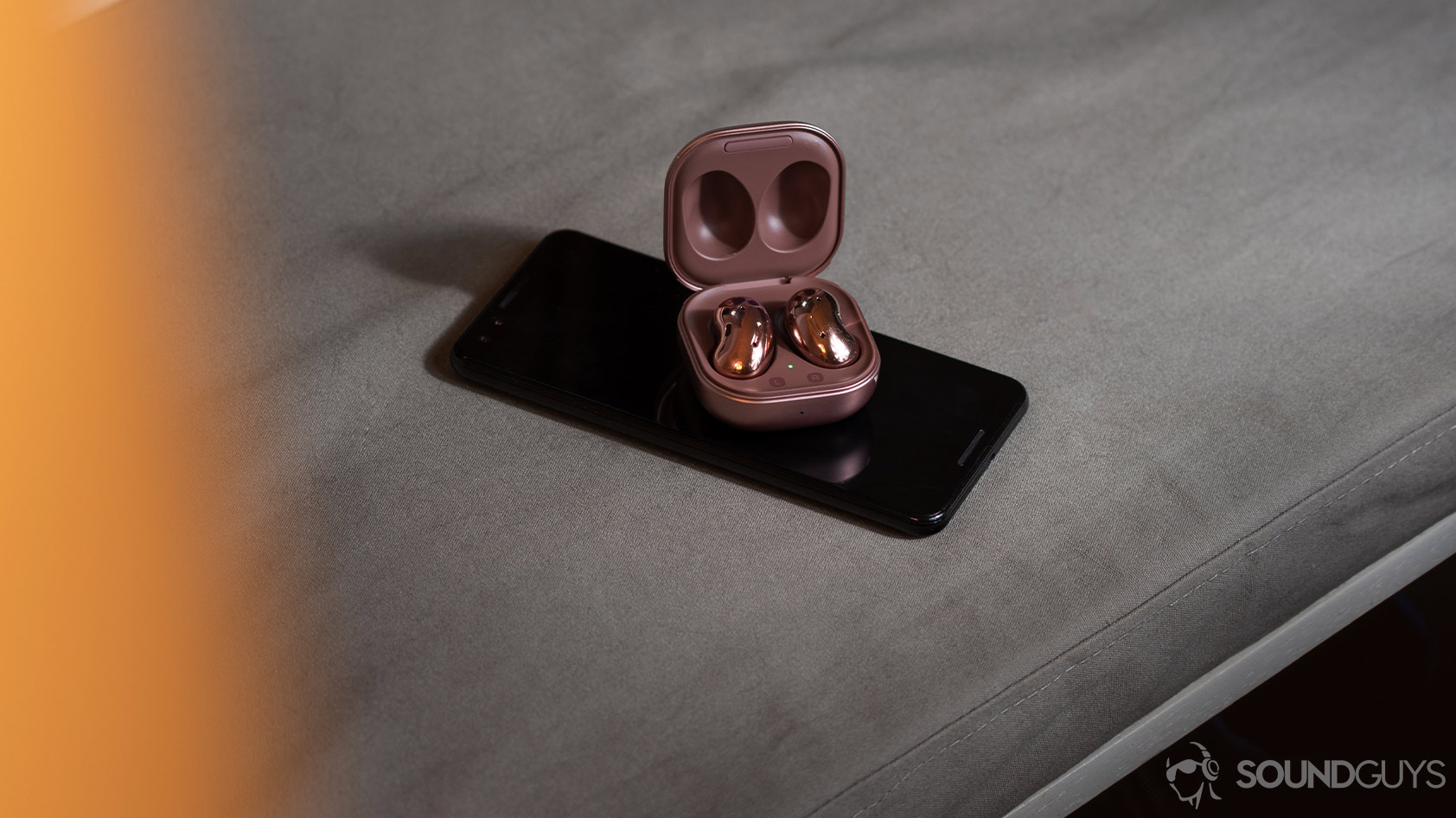
Angie McMahon’s song Slow Mover begins with an electric guitar C-F chord riff. On the upstroke of the strumming pattern, string-muting is audible but just barely. This sound is relayed very clearly through the AKG K371 headphones. What’s more, the reverb effect from the guitar amp is also tough to hear when listening to Slow Mover.
McMahon’s low register is reproduced well enough, and her voice sounds clear. To hear this, skip to 1:26, as she sings, “He thinks we can make it work.” Here, her pitch raises at the end of the word “work,” and you can hear the squeak of the letter -k. Throughout most of the song, vocal detail is hard to hear over the accompanying instruments. It’s easy to forget the voice is a string instrument with resonances that fall victim to the Galaxy Buds Live open-type design. Highs are difficult for me to discern during the song’s chorus, too, particularly cymbal hits at 1:58.
How good is the microphone on the Galaxy Buds Live?
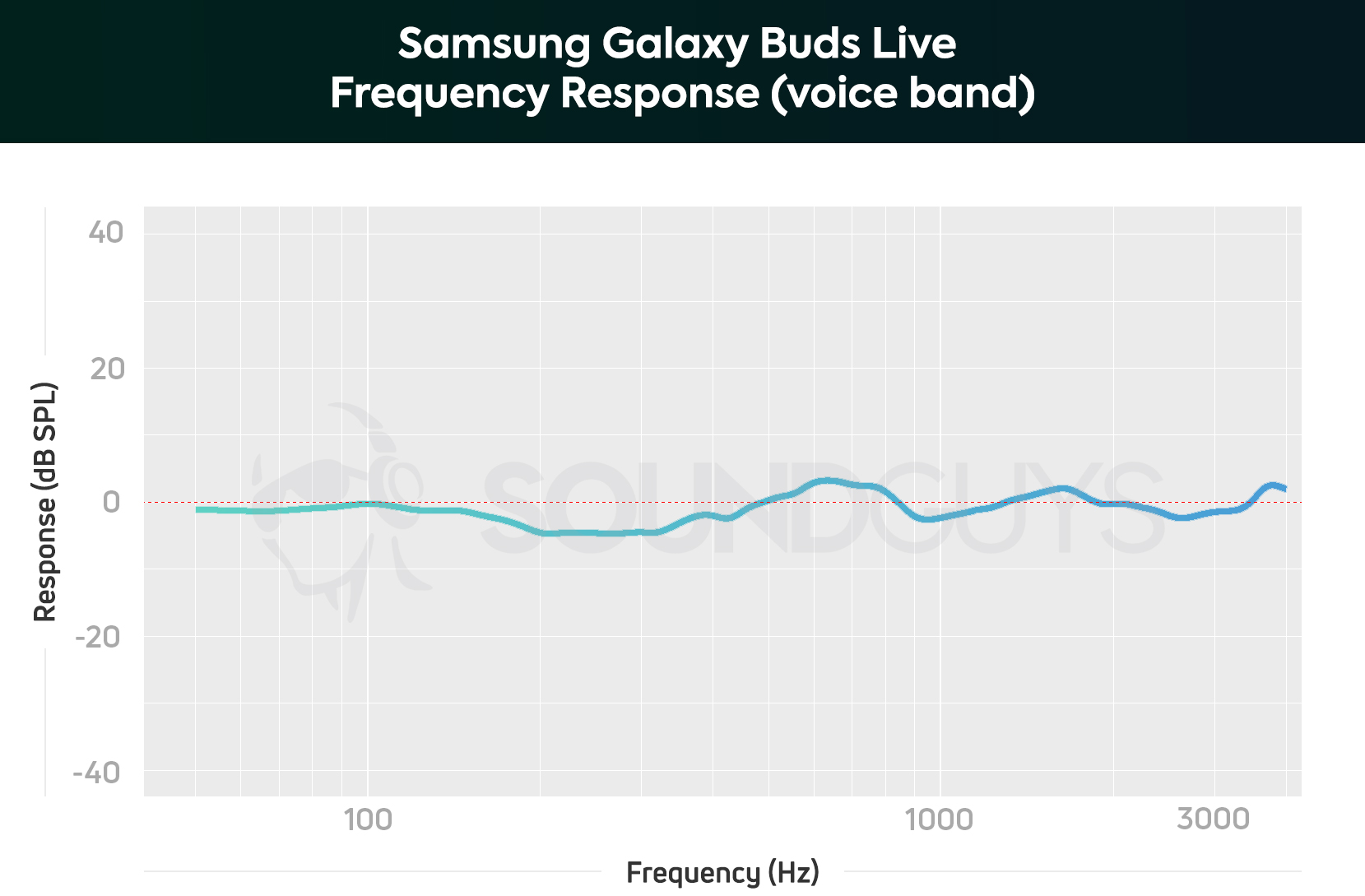
Microphone quality is excellent, as Samsung used an advanced array with its noise canceling true wireless earbuds. Each earbud is decked out with internal hardware, including three microphones. Two of the microphones are beamforming, and the third is an inward-facing voice pickup unit; this is a fancy name for an accelerometer that detects vibrations from your jawbone and uses bone conduction to turn them into audio signals. All of this combines to transmit clear audio while rejecting background noise. Microphone quality is one of those things that improves over time with firmware updates, so I expect this will only get better as the months pass.
Samsung Galaxy Buds Live microphone demo (Non-standardized):
How does the microphone sound to you?
Background noise rejection is pretty good when inside, but like all embedded microphone systems, the Samsung Galaxy Buds Live struggle with combating wind noise. If you like to pass personal calls by going on walks, make sure you check the weather first. A gust of wind may not be so loud to you but could irritate your friend on the other end of the call.
Should you buy the Samsung Galaxy Buds Live?

The Samsung Galaxy Buds Live warrants much of the gathered attention but may not be worth buying. Before purchasing, consider the pros and cons: do you really want noise canceling that only works a little bit? Technologically, it’s very impressive, but its functionality doesn’t seem as versatile as Samsung’s marketing claims. When using the earbuds, I miss my Nothing Ear 1 earbuds or Shure AONIC 50 noise canceling headphones.
Had the earbuds been billed as a non-noise canceling pair of open-type buds, I’d be more eager to recommend them: they’d be more affordable and less gimmicky. Still, Samsung deserves credit for its Hail Mary attempts at innovation, and these are the only open-type pair of earbuds that work for my ears. There are still some people who will be drawn to the buds, and that’s great, so long as you go in with the proper expectations of the noise canceling capabilities and limitations.
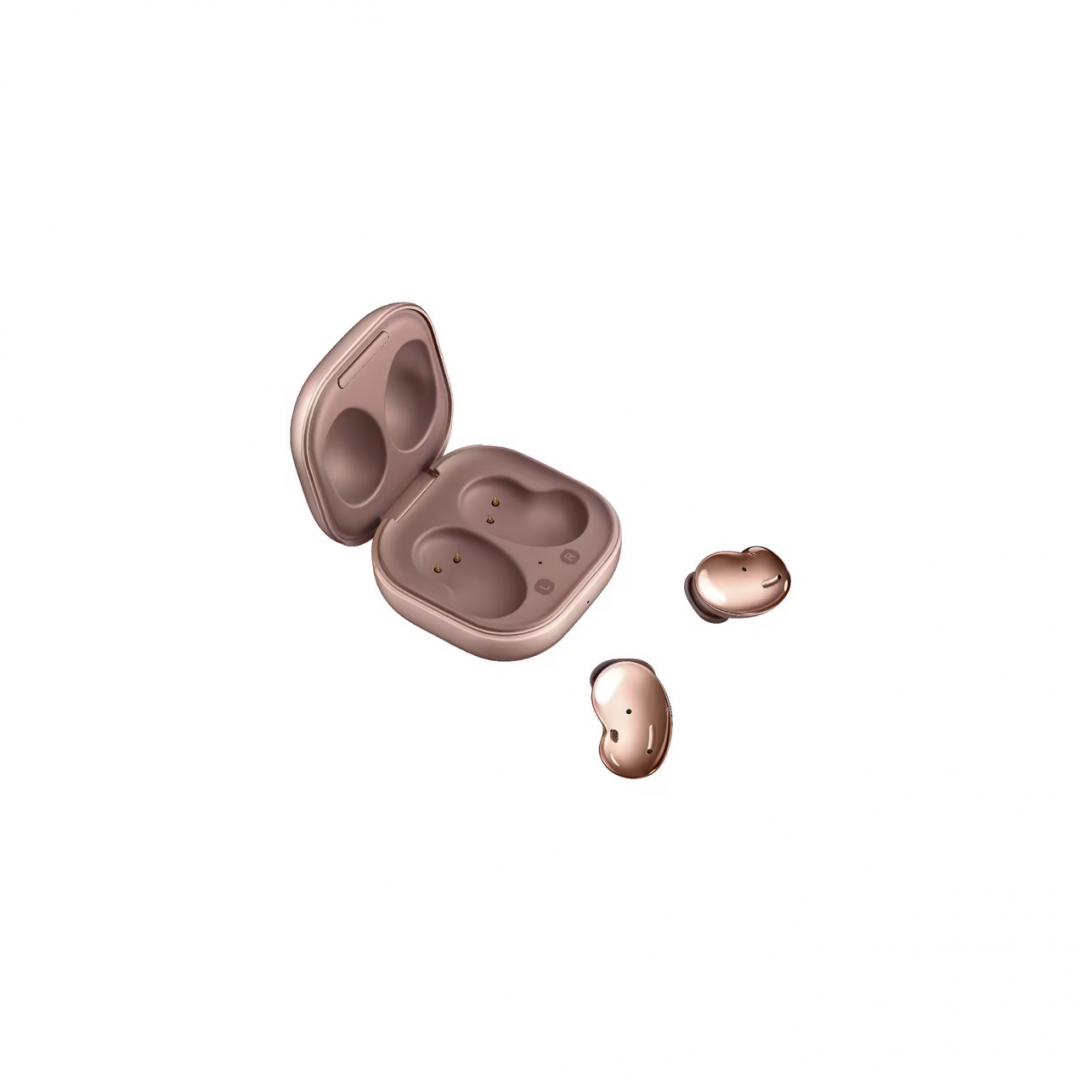

Should you get the Samsung Galaxy Buds 2 or 2 Pro instead of the Galaxy Buds Live?
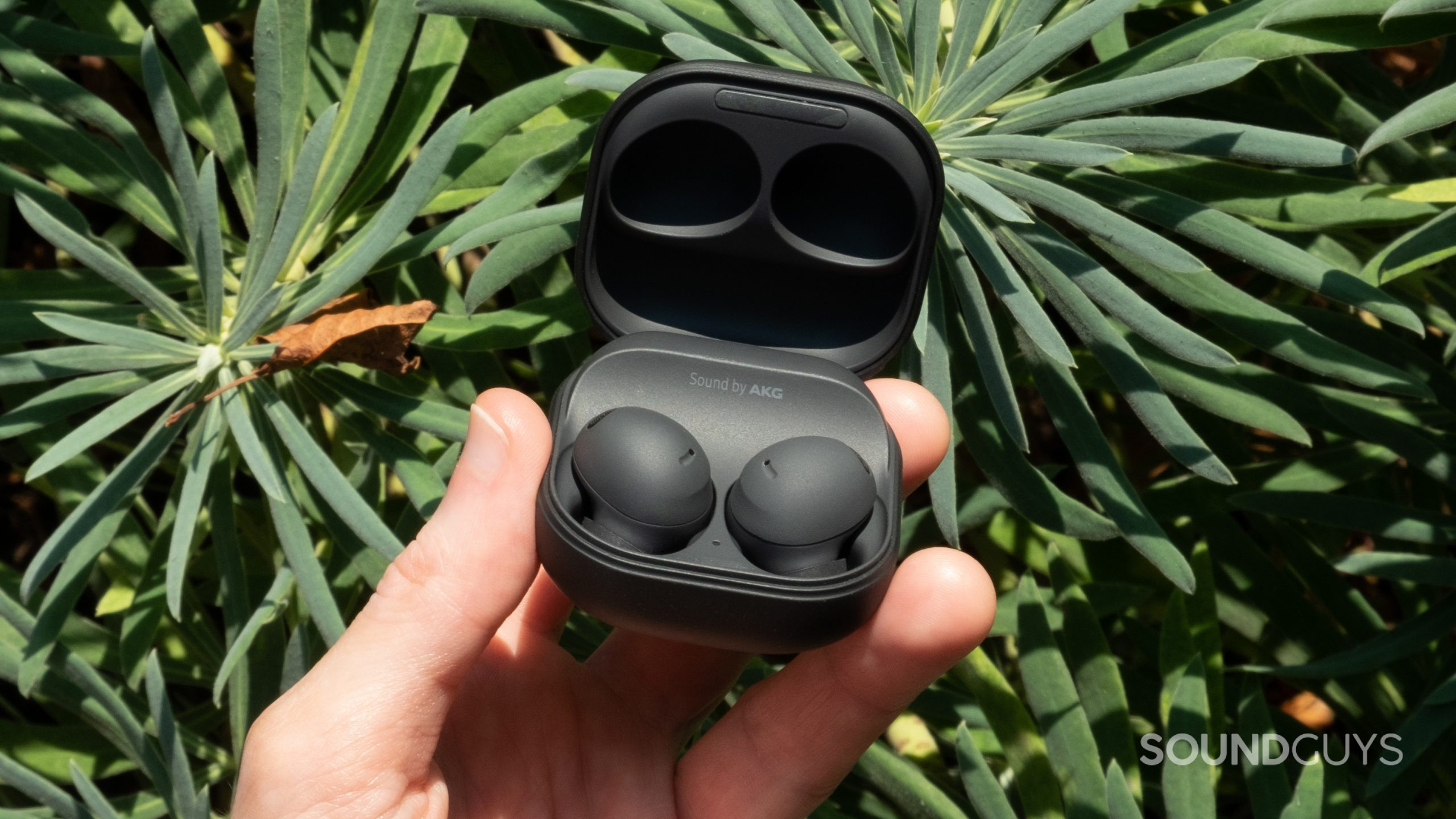
If you want a different pair of Samsung earbuds, get the Galaxy Buds 2 or Galaxy Buds 2 Pro. The Galaxy Buds 2 ($99 at Amazon) has slightly better noise canceling than the now-discontinued Galaxy Buds Pro, but the Galaxy Buds 2 Pro ($179 at Amazon) has the best ANC in Samsung’s lineup. All Galaxy Buds 2 series buds support Samsung 360 Audio and an in-app ear tip fit test. Unlike the Galaxy Buds Live, both pairs of buds seal to the ears, so you’ll get better sound, isolation, and fit than the bean-shaped buds.
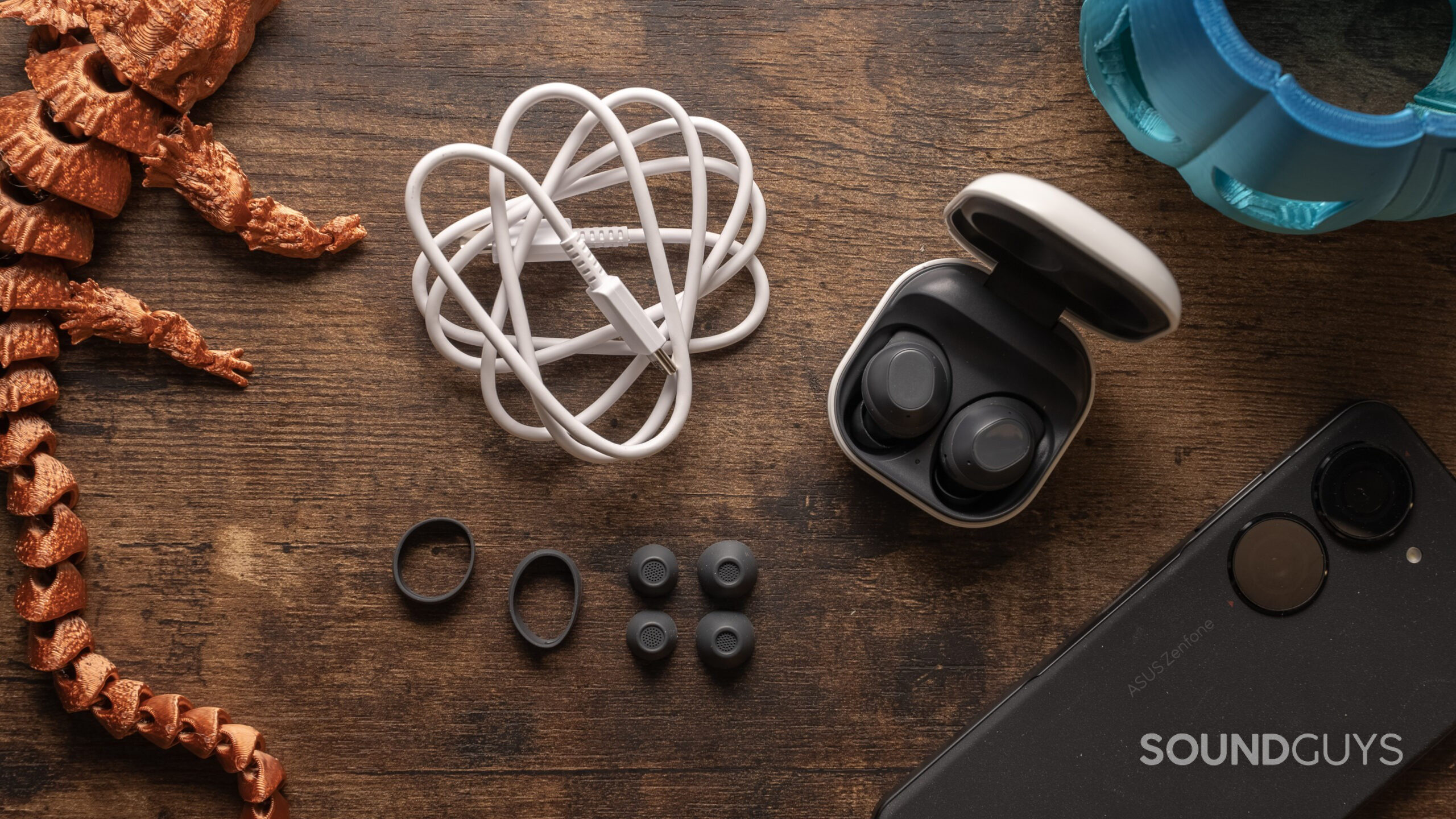
You might also consider the Galaxy Buds FE ($99 at Amazon). As far as sub-$100 earbuds go, these are about as sure a bet as it gets. They are well-suited as commuter buddies on the train or in an airplane and have ear wings for a more stable fit for athletic activities.
What should you get instead of the Samsung Galaxy Buds Live?
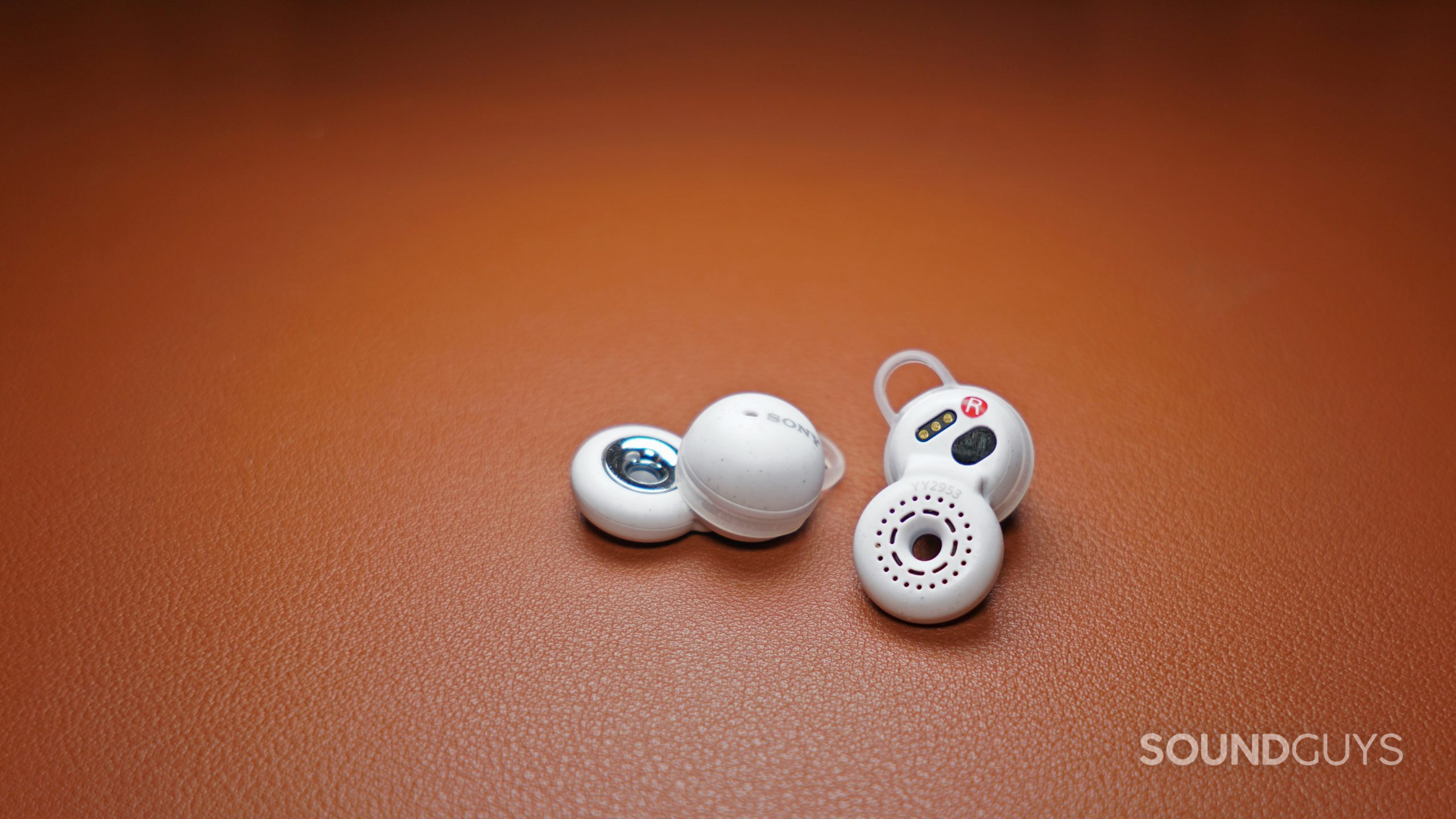
The Sony LinkBuds ($178 at Amazon) is another pair of true wireless earbuds with an open-type fit. Similar to the Galaxy Buds Live, the LinkBuds serves to keep you connected to your world while allowing you to stay entertained with music or podcasts. Unlike the Galaxy Buds Live, however, the LinkBuds has an IPX4 rating, and the case doesn’t support wireless charging. You’ll likely find the LinkBuds more comfortable than the Galaxy Buds Live due to the interchangeable ear wings and more stable fit, but both pairs of buds are more comfortable than the AirPods.
Other possibilities include the Nothing Ear (stick), which have a more traditional unsealed experience with some app support for $64 at Amazon. Be aware that these don’t have a lot of bass volume, but work well with any device and are still current.
For a truly open set of buds that aren’t bone-conduction, check out the Shokz OpenFit ($179 at Amazon). These silicone-covered buds wrap over your ears and rest outside the ear, so you can hear your environment perfectly. Of course, there’s no noise canceling at play here, but take a look at more conventional ANC earbuds for that.
If you’re set on getting open-ear headphones, consider bone-conduction headphones like the Shokz OpenRun. This costs $129 at Amazon and is one of the more durable headsets on the market with an IP67 rating. You’ll hear everything around you while listening to music, and this type of headphone works well with certain kinds of hearing aids.
Listeners who want great noise canceling shouldn’t even consider the Galaxy Buds Live. Instead, get Sony WF-1000XM5 ($298 at Amazon), Google Pixel Buds Pro ($199 at Amazon), or Bose QuietComfort Earbuds ($154.96 at Amazon) — all of which fit most consumers well and have much better ANC than the Galaxy Buds Live. Bose’s earbuds are a bit bulkier than Sony’s, but you might find them more comfortable and better for exercise thanks to the StayHear Max ear and wing tips.
Frequently asked questions about the Samsung Galaxy Buds Live
The Samsung Galaxy Buds Plus is the same price, or cheaper, than the Galaxy Buds Live, and outperforms the Galaxy Buds Live when it comes to sound quality, fit, and battery life. Our same testing recorded 11 hours and 44 minutes of playtime with the Galaxy Buds Plus, which runs circles around the ANC earbuds’ battery life, even with ANC off. The old earbuds lack noise canceling but do a better job of mitigating high-frequency sounds.
You can customize the controls, EQ the sound, and more through the Galaxy Wearable app; and the Samsung Galaxy Buds Plus case supports Wireless PowerShare and quick charging. Microphone quality is a hair better with the Samsung Galaxy Buds Live, though. For the best value within the Samsung family, get the Galaxy Buds Plus.
One of the easiest ways to fix connection issues with the Samsung Galaxy Buds Live (or any Bluetooth headset for that matter) is to reset the connection. To do this, go into your smartphone’s Bluetooth settings and select the options next to the Galaxy Buds Live. Select “Forget this device.” You’re then ready to begin the pairing process as if the Galaxy Buds Live were never associated with your smartphone.
The trouble with personal audio products that don’t create a seal is that anyone around you can hear your music too if it’s loud enough. Of course, it won’t be very loud, but it’s still audible if you’re close enough or it’s quiet enough where you’re listening. This is one of the reasons we generally avoid recommending this type of product if you want to listen in a noisy environment.